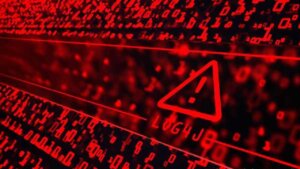Table of Contents
In today’s age, the ever-changing landscape of threats poses a constant risk to our valuable data. Cybersecurity is no longer an option; it has become a necessity. It is essential to invest in cutting-edge cybersecurity solutions to protect assets from attacks. These advanced tools harness the power of AI and machine learning to outsmart cybercriminals. By embracing security measures, such as Immediate Unlock, businesses can secure their data and uphold customer trust. Adhere to regulatory standards. Let’s delve into why enhancing your cybersecurity strategy is the best decision you can make.
Exploring Next-Generation Cybersecurity: An In-Depth Overview
Definition and Key Characteristics
Next-generation cybersecurity solutions surpass methods by utilizing technologies for real-time threat detection and response. These solutions integrate machine learning, artificial intelligence and behavioral analytics with the aim of anticipating and mitigating risks before they materialize.
They are designed to adapt to emerging threats and continually enhance their capabilities through insights gained from incidents. This proactive approach aids in identifying vulnerabilities.
Contrasts Between Traditional and Next-Gen Cybersecurity Technologies
Cybersecurity strategies revolve around perimeter defenses such as firewalls and antivirus software that heavily rely on recognized threat signatures.
In contrast, the latest solutions focus on threat intelligence and behavior analysis. They can detect activities that may signal a security breach, even if the threat is new and unknown. This shift from reacting to being proactive in defense represents an advancement in safeguarding assets.
Key Factors Driving the Rise in Investments in Cybersecurity
Escalation of Sophisticated Cyber Attacks and Data Breaches
Cyber attacks have grown more sophisticated and frequent. Hackers now employ methods to infiltrate systems, necessitating companies to enhance their security measures. Recent high-profile data breaches have underscored the importance of security protocols. The financial and reputational repercussions of incidents can be compelling businesses to make substantial investments in cybersecurity.
Regulatory Mandates and Compliance Pressures
Governments and regulatory entities are enforcing cybersecurity rules. Businesses must adhere to these guidelines to avoid penalties. These regulations often mandate security practices and regular assessments. Consequently, organizations are driven to adopt solutions that meet compliance standards and safeguard information.
Increasing Significance and Vulnerability of Digital Assets
Digital assets, such as customer data and intellectual property, hold value. Safeguarding these assets is essential for preserving edge and customer confidence.
As companies shift towards digitizing their operations, the amount of data being handled grows, leading to a need for advanced security measures. Investing in cybersecurity is crucial to safeguarding these assets from threats.
Key Elements of Modern Cybersecurity Solutions
Utilizing Artificial Intelligence and Machine Learning for Threat Detection
Artificial intelligence (AI) and machine learning are components of cybersecurity practices. They sift through datasets to detect patterns and irregularities, enabling the prediction of threats and automated responses to mitigate risks. By learning from incidents, AI and machine learning improve the system’s ability to identify and prevent attacks.
Zero Trust Security Models; Concepts and Application
The Zero Trust model operates on the principle that no entity, whether internal or external to the network, should be automatically trusted. It mandates verification for all access requests, reducing the vulnerability to insider threats. Implementing Zero Trust involves access controls, ongoing monitoring and robust authentication methods to ensure that authorized individuals can access confidential data.
Cutting Edge Encryption Technologies
Encryption serves as a cornerstone of cybersecurity protocols. Advanced encryption technologies protect data both when stored and during transmission, guaranteeing that intercepted data remains indecipherable without the correct decryption key. Employing encryption standards is vital for securing information against unauthorized breaches.
Monitoring user behavior and analyzing activities are aspects of analytics. By establishing a pattern of user actions, these tools can pinpoint any deviations that might signal a security risk. Continuous monitoring of user activity aids in the detection of breaches and allows for prompt responses to minimize risks.
Cloud Security Plays an Essential Role in Protecting Digital Assets
Understand the Importance of Multi-Cloud Environment Security
Cloud security plays a role in safeguarding assets, especially in a multi-cloud setting. With the adoption of cloud strategies by businesses, ensuring robust cloud security measures is paramount.
Each cloud environment poses security challenges, necessitating protective measures for data across various platforms. Effective cloud security practices include data encryption, access control management and proactive monitoring of activities. A strong cloud security approach ensures the protection of assets of the cloud platform in use.
Key Cloud Security Strategies and Tools
Implementing strategies is crucial for cloud security. Encryption serves as a layer to safeguard data from threats even if intercepted. Access controls manage permissions to access data, reducing entry risks significantly. Real-time threat detection and response are facilitated through monitoring practices. Tools like Cloud Access Security Brokers (CASBs) offer enhanced visibility and control over cloud applications, improving data protection within the cloud environment.
Benefits of Investing in Next-Generation Cybersecurity
Improved Response Times and Threat Detection
Investing in cutting-edge cybersecurity technology brings advantages, such as enhancing the detection of threats and reducing response times. By utilizing advanced tools, organizations can quickly. Address security risks, thus minimizing the impact of cyber attacks on their systems and data.
Enhanced Privacy and Data Protection
Next-generation cybersecurity solutions also offer enhanced data protection and privacy measures. Through the use of encryption techniques and access controls, sensitive information is safeguarded against access. This helps maintain customer confidence and ensures compliance with privacy regulations.
Decreased Chance of Monetary Loss and Damage to Reputation
Furthermore, investing in cybersecurity solutions helps mitigate the risks associated with losses and damage to reputation caused by cyber-attacks. By preventing breaches and securing data, organizations can avoid costly consequences such as fines, legal repercussions and erosion of customer trust. Ultimately, these investments in state-of-the-art security technologies contribute to maintaining the stability and reputation of a company.
Major Challenges
Budgetary Restrictions And Cost Factors
When it comes to implementing next-gen cybersecurity solutions, one of the challenges lies in managing costs within budget constraints. Companies must allocate resources towards acquiring tools and technologies to strengthen their defense mechanisms against evolving cyber threats.
However, choosing to refrain from investing in security measures can end up costing organizations more. Companies need to consider the investment required versus the financial damages caused by cyber-attacks. By budgeting and prioritizing security requirements, businesses can effectively manage these expenses.
Integration With The Current Framework
Incorporating new-generation solutions into IT setups poses its set of challenges. The compatibility between legacy systems and advanced security technologies may present obstacles. To seamlessly integrate these technologies, meticulous planning and execution are crucial. Companies might have to update or replace systems to capitalize on the advantages offered by cutting-edge cybersecurity measures fully.
Skill Gaps And The Need For Specialized Expertise
There is a growing demand for cybersecurity professionals with specialized skills. The rapid evolution of cyber threats requires continuous learning and expertise. Companies may face challenges in finding and retaining skilled cybersecurity personnel. Investing in training and development programs can help bridge this skill gap. Partnering with cybersecurity firms or consultants can also provide the necessary expertise to implement and manage advanced security solutions.
Conclusion: Building a Resilient Cybersecurity Posture
In a world where cyber threats are growing in complexity, investing in next-gen cybersecurity is essential. These advanced solutions offer real-time threat detection, robust data protection, and faster response times, ensuring your digital assets remain secure. While the cost and implementation challenges can be daunting, the benefits far outweigh the risks. Prioritize your cybersecurity strategy today to protect your business from financial losses and reputational damage. Remember, a proactive approach to cybersecurity is not just about defense—it’s about resilience and peace of mind.









